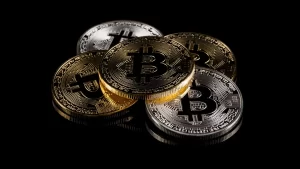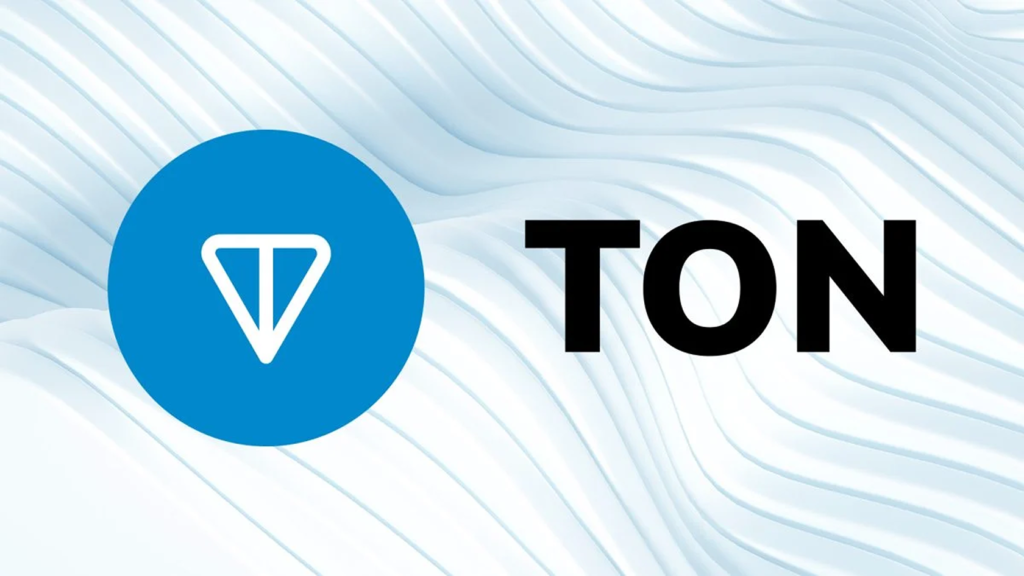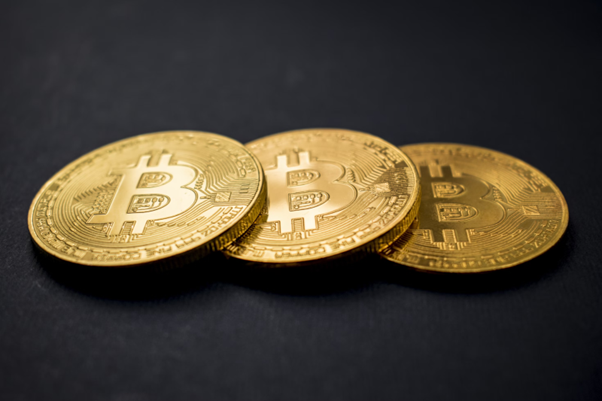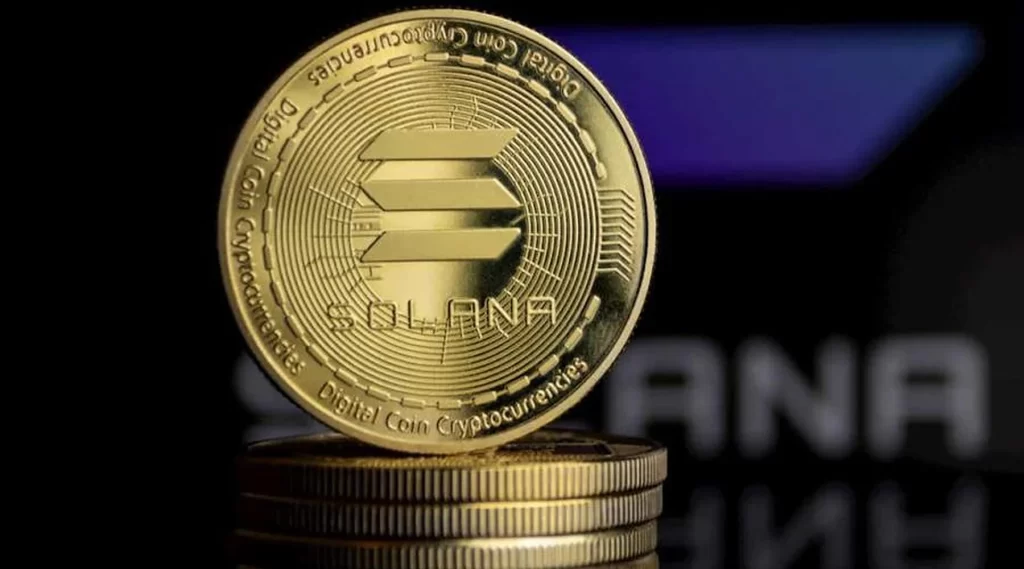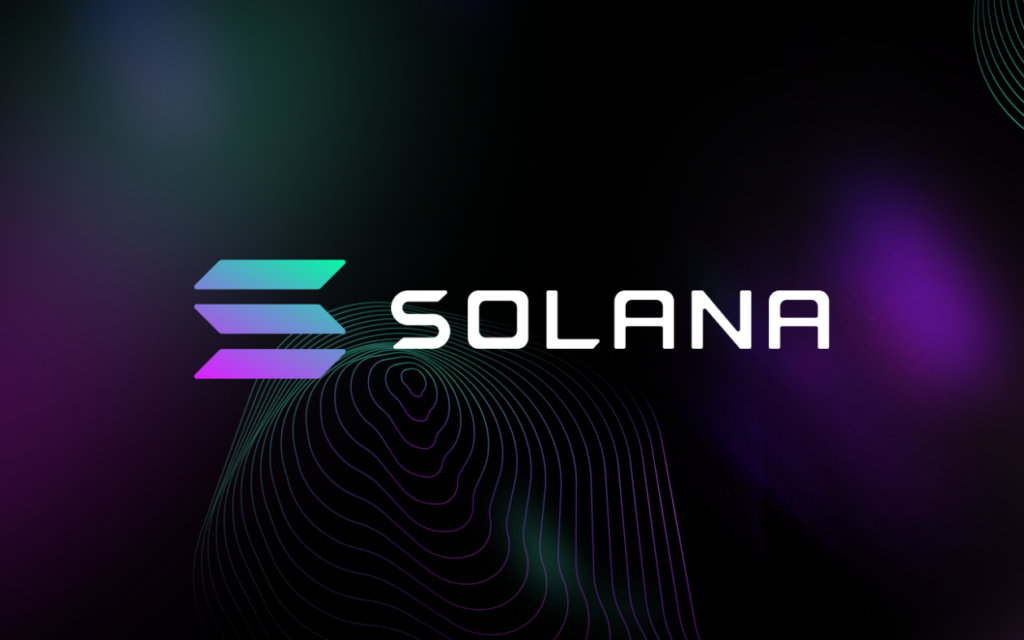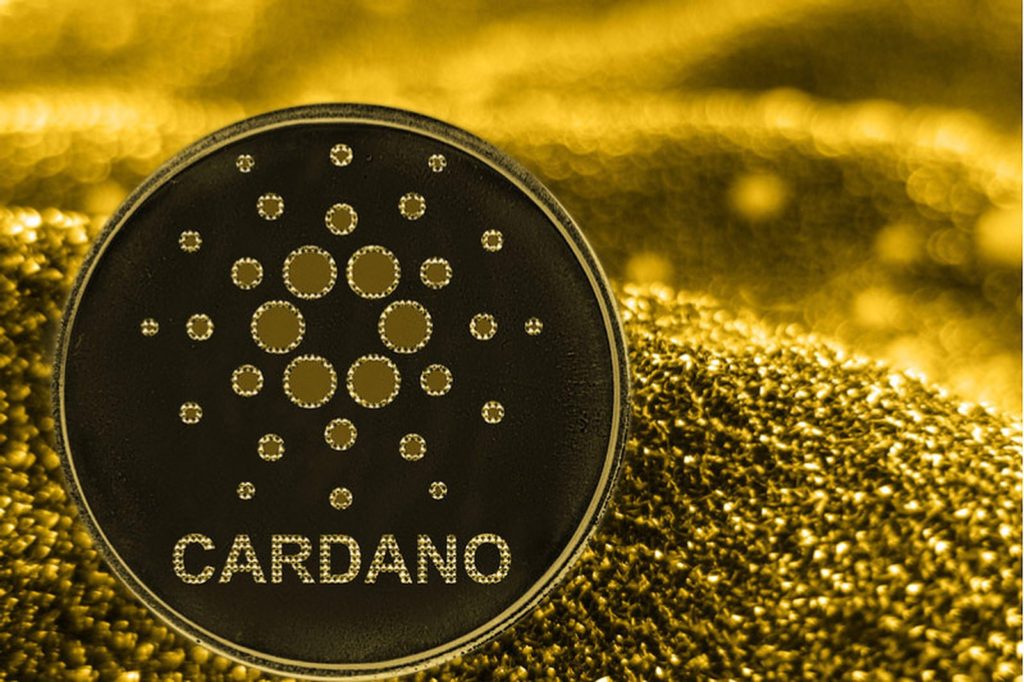The Open Network (TON), a blockchain and cryptocurrency platform integrated with Telegram, is set to receive a significant boost from a new fund backed by the Bitget crypto exchange.
Bitget has announced the creation of a $20 million TON Ecosystem Fund in partnership with Singapore-based investment firm Foresight Ventures, as shared with Cointelegraph on June 26.
This fund aims to support early-stage projects on the TON platform amidst the growing number of TON-based applications and the increasing value of its native cryptocurrency, Toncoin (TON).
The fund will provide comprehensive support for project development within the TON ecosystem, including offering liquidity on the Bitget platform.
The TON ecosystem has shown remarkable growth in 2024.
According to Delphi Digital, this expansion is driven by Telegram’s substantial monthly user base of 900 million, which brings more users into the crypto space daily.
By mid-June, the TON blockchain consistently recorded more active addresses than Ethereum, nearly every day for almost a month.
Furthermore, the total value locked (TVL) in the TON ecosystem has increased more than fivefold over the past two months, reaching $600 million.
This surge is attributed to the influx of new projects and assets such as TON-based Tether (USDT), DeDust.io, and Ston.fi.
Additionally, Toncoin has been hitting all-time highs, peaking at $8.17 on June 14. CoinGecko data indicates that TON has returned over 400% since the start of 2024.
READ MORE: Bitcoin and Ether Transaction Fees Plunge Amidst Crypto Market Turmoil
Bitget’s new funding initiative, in collaboration with Foresight Ventures, aims to facilitate the mass adoption of crypto.
Bitget CEO Gracy Chen commented on the initiative: “We are glad to see that the TON ecosystem is experiencing a positive feedback loop due to the growth in users, TVL, and token price.”
She added, “We believe in the potential of TON and its ability to create a more equitable future.
“Our Telegram Signal Bot is just one example of how we are empowering the community and enhancing the user experience.”
This new fund follows Bitget’s previous efforts to support the rapidly growing TON ecosystem.
On June 25, Bitget’s non-custodial wallet launched a comprehensive support package for the TON network, aiming to connect decentralized applications within the ecosystem.
Bitget had earlier introduced the Telegram Signal Bot to streamline direct trading signals across trading communities.
To submit a crypto press release (PR), send an email to sales@cryptointelligence.co.uk.
The recent bearish market turmoil has dampened the previously high levels of bullish remarks and euphoria surrounding Bitcoin’s price, potentially indicating a market bottom.
Data from crypto analytics firm Santiment shows that bullish Bitcoin remarks across social media platforms like X, Reddit, Telegram, 4Chan, and BitcoinTalk have significantly declined over the past few weeks.
BTC’s price has been trading sideways since the Bitcoin halving in April.
Santiment data indicates that trader sentiment was most bullish at the beginning of April, leading up to the Bitcoin halving.
However, over the past three months, optimism has gradually waned as traders have lost confidence in the markets due to Bitcoin’s failure to reach new all-time highs.
On the other hand, bearish calls have also declined over the same period, but not as drastically as the bullish calls. Santiment noted that the decline in trader euphoria around Bitcoin is a potential bottom signal.
A bottom signal suggests an impending market trend reversal.
When an asset is undervalued or trading at its lowest point, investors often view it as a buying opportunity.
From a technical analysis perspective, the lowest level of support for the asset is referred to as the bottom.
Bitcoin hit a new all-time high on March 14, reaching $73,780 on Coinbase.
Since then, the top cryptocurrency has traded in a range between $60,000 and $70,000, momentarily dropping below $60,000 before regaining key support. BTC is currently trading at $61,500.
READ MORE: Bitcoin Rebounds Above $62,000 After Six-Week Low, Analysts Eye $63,500 Target
Historically, every four-year halving cycle has resulted in a new all-time high for Bitcoin after the event.
The price of Bitcoin typically begins to rise about a month before the halving, driven by the anticipation of increased scarcity.
However, the price does not surge immediately after the halving. Instead, it usually enters a sideways movement or consolidation phase before experiencing a bullish breakout.
Bitcoin analyst Willy Woo noted that the BTC price will recover after “weak miners die and hashrate recovers.”
He added that in 2017, the hashrate recovery took 24 days, while in 2021, it took only eight days. In 2024, the recovery has already taken 61 days.
Another popular Bitcoin analyst, Rekt Capital, said that Bitcoin continues to consolidate in the post-halving reaccumulation range.
The upper resistance level of the range is approximately $71,500, while the lower support level is around $60,600, which is the current price of BTC.
To submit a crypto press release (PR), send an email to sales@cryptointelligence.co.uk.
On June 28, 21Shares submitted an S-1 application to the United States Securities and Exchange Commission (SEC) for a spot Solana exchange-traded fund (ETF), to be named the 21Shares Core Solana ETF.
This marks the second SEC filing for a spot SOL ETF, following VanEck’s submission on June 27.
The proposed ETF is slated to trade on the Cboe BZX Exchange, with Coinbase acting as the custodian for the fund’s Solana holdings, all of which will be privately insured.
Assets of the ETF will be stored in segregated wallets on the Solana blockchain.
Unlike some other funds, the 21Shares Core Solana ETF will not engage in validating or staking SOL.
The intraday share value will be recalculated every 15 seconds, while the valuation of SOL within the fund will be determined daily at 4:00 pm ET (09:00 pm UTC).
Headquartered in Zurich, Switzerland, 21Shares is a crypto-focused financial technology firm.
It already offers ETFs for future Ether, as well as spot and future Bitcoin in the U.S. market in collaboration with ARK Invest.
Additionally, the partnership provides an ETF that invests in BTC and ETH futures, along with publicly traded equities of companies involved in the blockchain and digital economy sectors.
READ MORE: Potential U.S. Spot Solana ETFs Could Skyrocket SOL Price by Ninefold, GSR Markets Predicts
Following VanEck’s filing on June 27, the price of SOL experienced a rapid increase from $139 to $150. As of 12:00 pm ET, SOL was trading at approximately $141, according to CoinMarketCap.
Previously, on May 31, 21Shares had applied for a spot ETH ETF named the 21Shares Core Ethereum ETF, after ending its partnership with ARK Invest for that specific application.
The SEC approved the ARK 21Shares spot ETH ETF 19b-4 filing on May 23. It is worth noting that S-1 filings, such as the one for the Solana ETF, are separately reviewed and approved by the SEC.
Solana (SOL) ranks as the fifth largest cryptocurrency by market capitalization.
However, the Solana blockchain has faced criticism for experiencing frequent outages and delays in transaction processing during periods of high congestion.
To submit a crypto press release (PR), send an email to sales@cryptointelligence.co.uk.
Spot Solana exchange-traded funds (ETFs) in the United States could potentially drive up the price of SOL by a factor of nine, according to crypto market maker GSR Markets.
In a June 27 report, GSR described Solana as part of “crypto’s big three” and investigated whether Solana would be the next spot cryptocurrency ETF to receive U.S. regulatory approval.
Coincidentally, the report came out the same day VanEck filed to issue a spot Solana ETF, surprising many.
GSR, which holds a long position on SOL, estimated an “8.9x” price increase assuming the spot Solana ETFs would attract 14% of the flows that spot Bitcoin ETFs have seen since their January launch, based on their relative market cap size.
In GSR’s “blue sky scenario,” Solana’s current price of $149 could soar to over $1,320, boosting Solana’s market cap to $614 billion.
In contrast, GSR’s “bear” and “baseline” scenarios would see spot Solana ETFs capturing 2% and 5% of Bitcoin ETF flows, leading to 1.4x and 3.4x price increases for SOL, respectively.
The firm noted that these estimates might be even higher if spot Solana ETFs included income from staking rewards, although staking wasn’t allowed in the approved spot Ether ETFs.
GSR stated, “Solana is poised for a spot ETF if and when additional spot digital asset ETFs are allowed in the US, and the impact on price may just be the largest yet.”
Despite GSR’s optimism, Bloomberg ETF analyst Eric Balchunas and others believe that a change in the U.S. presidency and the chair of the Securities and Exchange Commission (SEC) would be necessary for a spot Solana ETF to be seriously considered.
The SEC and its Chair, Gary Gensler, labeled SOL as a security in lawsuits against Binance and Coinbase, arguably making the pathway to approval more challenging than for the now-approved spot Bitcoin and Ether ETFs.
VanEck’s application follows cryptocurrency asset manager 3iQ’s filing for a spot Solana ETF in Canada, marking a North American first.
The Solana ecosystem and network have also received praise from $1.5 trillion asset manager Franklin Templeton, although the firm hasn’t confirmed plans for a spot Solana ETF in the future.
Globally, over $1 billion worth of Solana exchange-traded products are already available.
To submit a crypto press release (PR), send an email to sales@cryptointelligence.co.uk.
A failed spam attack on the Cardano blockchain has prompted developers to work on a node upgrade to prevent future distributed denial-of-service (DDoS) attacks.
On June 25, the Cardano network faced a DDoS attack beginning at block 10,487,530.
Raul Antonio, CTO of Fluid Tokens, explained that the attack aimed to trick the Cardano blockchain into charging lower fees for high-value transactions.
Additionally, if the attack had succeeded, the attacker could have stolen staked Cardano tokens from the network.
During the attack, Philip Disarro, founder and CEO of Anastasia Labs, explained: “The idea behind this attack is to take advantage of the fact that the size of reference scripts currently does not impact the transaction fee, but it does impact the work that validators have to do to process the transaction.”
Disarro and other Cardano developers managed to outsmart the attacker, reclaim the stolen ADA tokens, and stop the DDoS attack.
The attacker eventually ceased the DDoS attack and failed to move any stolen funds.
READ MORE: Bitcoin and Ether Transaction Fees Plunge Amidst Crypto Market Turmoil
Disarro commented: “Thanks for the free money moron.
“Truly iconic that the attacker who presumably wanted to damage the ecosystem actually ended up donating to the open-source smart contract development work we do […]”
Disarro mentioned that there were alternative methods to stop the attack, but his approach was the quickest.
He added, “If you rush to deploy something to production without thorough testing and a high-quality, independent audit, you might wind up losing a lot of money to vulnerabilities just like the attacker did.”
Intersect, a member-based organization for the Cardano ecosystem, confirmed the attack and thanked the developer community for their swift action against the DDoS attack.
Despite the attack, the Cardano network was not compromised and continued to function normally.
However, Intersect noted, “The network has experienced a higher load than normal and some stake pool operators (SPOs) have been negatively affected due to an intensification in block height battles.”
Intersect assured that once a solution has been thoroughly tested and deployed, they will share the new node version for SPOs to upgrade to.
The Intersect task force is working to identify and test a solution to further reduce the impact of such spam attacks.
To submit a crypto press release (PR), send an email to sales@cryptointelligence.co.uk.
Curve Finance has revised its fee distribution mechanism, transitioning from the 3crv token to its native stablecoin, crvUSD, to enhance the stablecoin’s utility within the Curve Finance ecosystem and incentivize users.
According to a press release shared with Cointelegraph, switching the fee distribution to crvUSD will create “an additional supply sink for the stablecoin,” primarily due to uncollected fees contributing to this “supply sink” and potentially boosting the total value locked (TVL) in the ecosystem.
Michael Egorov, founder of Curve Finance, discussed the switch’s impact on users with Cointelegraph:
“The transition to crvUSD means that users will now obtain fees in a dollar-denominated stablecoin.
“This shift simplifies the process significantly, as crvUSD doesn’t have to be converted to anything else to be utilized in Curve Finance products.”
The press release highlights that distributing fees in crvUSD will incentivize stablecoin usage, encouraging users to engage more with products and services that use it.
On community incentives through this transition, Egorov explained that Curve users could deposit crvUSD into the ecosystem using the fees earned.
“The value of 3crv, although generally increasing, has a variable conversion rate (currently around 1.03).
“This variability necessitated additional steps for users to convert 3crv into a more stable or usable form of currency for other activities.”
READ MORE: Binance Tightens Security Measures to Combat Account Misuse and Enhance Platform Integrity
Curve Finance acknowledges potential liquidity concerns and risks associated with the transition.
Egorov elaborated on the risks, mentioning operational risks and asset age:
“The 3crv token has been operational for over four years and has shown no issues. […] CrvUSD is just one year old and has yet to fully establish its reliability.
“It underwent multiple audits and has been deemed fit for deployment, but it is inherently less time-tested compared to 3crv.”
Egorov also addressed operational risks during the “preparation phase” for on-chain votes required for the change, stating that these risks have been mitigated since “all relevant votes” have passed.
Overall, the switch to crvUSD aims to streamline user experience and boost the stablecoin’s role within the Curve Finance ecosystem, despite some inherent risks and the need for further community adaptation.
To submit a crypto press release (PR), send an email to sales@cryptointelligence.co.uk.
The ratio of active Bitcoin addresses has fallen to its lowest level since November 2010, based on onchain data from IntoTheBlock.
In June, the weekly active wallet ratio hit a low of 1.22%, peaking at 1.32%. This highest ratio was last seen in November 2010.
Moreover, the total number of active wallets has also reached multi-year lows. The week of May 27 recorded 614,770 active wallets, the lowest since December 2018.
A declining active address ratio signifies a reduction in buying and selling activity among Bitcoin holders, suggesting a phase of market consolidation.
Juan Pellicer, a senior researcher at IntoTheBlock, attributes Bitcoin’s decreasing wallet activity to weaker retail participation compared to past cycles.
“This year’s run to a new all-time high was driven by institutional capital instead of retail investors,” Pellicer told Cointelegraph.
“The wider economic situation could have played a role in retail not making as many crypto investments as they’ve done in the past.”
The decline in activity comes as investors prepare for increased whale movements, including the Mt. Gox trustee’s plan to start distributing payments to creditors in July.
Some larger holders, including those associated with governments, have also been observed engaging in selling activities.
“Due to this concentration, much of the bearish trading activity is being performed offchain, which doesn’t significantly impact onchain address activity statistics,” Pellicer adds.
Are Runes struggling?
The drop in activity might seem counterintuitive to the launch of Runes, a fungible token protocol introduced to the Bitcoin ecosystem alongside the latest halving event in April.
Runes was anticipated to provide an alternative revenue stream for miners, which it did on the first day as miners earned record-high trading fees on halving day.
However, transaction fees have since normalized to pre-halving levels, and miner reserves, representing the new Bitcoin held by miners, are also at 14-year lows.
Pellicer told Cointelegraph that activity on Runes has cooled off, though the cyclical nature of such assets suggests this is a temporary lull rather than a permanent decline.
Meanwhile, recent crypto attention has shifted to memecoins and celebrity tokens, attracting speculators gambling on larger gains.
Though Bitcoin is known for its volatility, its current state can be considered stable compared to lower-cap memecoins.
To submit a crypto press release (PR), send an email to sales@cryptointelligence.co.uk.
Bolivia’s central bank, Banco Central de Bolivia, has reversed its ban on Bitcoin and cryptocurrency payments, now permitting financial entities to conduct transactions using digital assets to modernize its payment system.
This shift aims to help bolster Bolivia’s struggling economy and bring it in line with Latin American crypto regulations.
The change marks the end of a crypto ban that started in 2014. In December 2020, the government had prohibited banking entities from engaging with cryptocurrencies under Board Resolution N°144/2020.
Now, approved regulations allow banks to transact in cryptocurrencies via authorized electronic channels.
However, the central bank emphasized that cryptocurrencies are not considered legal tender.
Therefore, while banks can trade crypto assets, the Bolivian government does not recognize them as legal currency, and businesses are not required to accept them as payment.
Banco Central de Bolivia also plans to launch an awareness program under its Economic and Financial Education Plan.
This initiative aims to educate the public about the potential risks of cryptocurrencies and how to handle them responsibly.
The new regulations were developed in collaboration with the Financial Investigations Unit, the Financial System Supervisory Authority, and the central bank. These three bodies crafted the regulatory update, which took effect on June 26.
The legislation also aligns Bolivia’s crypto regulations with recommendations from the Latin American Financial Action Task Force, positioning Bolivia among other Latin American nations adopting crypto to boost their economies.
Latin America is increasingly embracing Bitcoin.
Over recent years, several countries in the region have faced economic challenges and rising inflation, prompting them to seek alternative solutions.
Cryptocurrencies have emerged as a popular option in this new economic landscape.
El Salvador was the first country in Latin America and the only one globally to adopt Bitcoin as legal tender alongside the US dollar in 2021.
Mexico, while not recognizing cryptocurrency as legal tender, allows it for value transfers and payments and taxes profits from crypto sales on centralized exchanges.
Brazil has also become pro-crypto, introducing income-tax regulations in 2023, with a 15% tax on crypto profits.
Argentina recently elected a pro-Bitcoin president to combat rampant inflation, following El Salvador’s example.
To submit a crypto press release (PR), send an email to sales@cryptointelligence.co.uk.
Bitcoin has experienced a “healthy reset” in bullish sentiment due to a key BTC price indicator reaching eight-month lows.
On June 27, popular analyst On-Chain College highlighted on X (formerly Twitter) that classic patterns are repeating on the Bitcoin Mayer Multiple.
Although Bitcoin remains at $60,000, a notably bearish sentiment has followed its recent 17% dip.
As reported by Cointelegraph, the Crypto Fear & Greed Index is nearing its 2024 lows, and there is little optimism among average hodlers on social media for a price rebound.
The Mayer Multiple, however, suggests that a recovery might be imminent.
This indicator measures Bitcoin’s current price against its 200-day moving average, providing a buy or sell signal based on the resulting ratio.
Its creator, Trace Mayer, originally considered a reading below 2.4 as “buy” territory.
Data from on-chain analytics firm Glassnode shows that as of June 26, the Mayer Multiple stood at 1.05.
READ MORE: German Government Wallet Sells $54 Million in Bitcoin, Sparking Price Drop Concerns
In contrast, for the Mayer Multiple to hit 2.4, the price would need to be nearly $140,000. BTC/USD last reached a 2.4 reading in March 2021.
“The Bitcoin Mayer Multiple is now at a level not seen since October 2023, despite the price being $60.9K now vs. $29.9K back in October,” On-Chain College commented.
“A healthy reset of sentiment to shift back bearish while being at twice the price.”
Extreme lows in the Mayer Multiple do not always align with BTC price floors. In mid-2022, the indicator bottomed at around 0.47, but it took another four months for the price to mark the bear market’s lowest point.
As Cointelegraph continues to report, price strength is a hot topic in June, with the Mayer Multiple not being the only “buy” signal currently valid.
Bitcoin’s relative strength index (RSI) has also entered “oversold” territory across multiple timeframes.
On the daily chart, RSI was last at this week’s levels in August 2023 — a period when other bull market support trendlines, such as the short-term holder cost basis, were similarly violated.
“The last time the RSI was this low, Bitcoin had just consolidated for 3+ months, just below the key resistance @ 30k,” popular trader Jelle noted.
“We’re looking at 3+ months of consolidation below 70k now. History repeating?”
BTC/USD was trading at around $60,700 at the time of writing, according to data from Cointelegraph Markets Pro and TradingView.
To submit a crypto press release (PR), send an email to sales@cryptointelligence.co.uk.
Crypto losses from hacks and scams surged in the second quarter of 2024, more than doubling from the same period the previous year, as reported by blockchain security platform Immunefi.
Losses totaled over $572 million in Q2 2024, a significant increase from $220 million in Q2 2023. Centralized exchange hacks were the primary contributors to these losses.
Before Q2, losses from hacks and scams had been decreasing, with Immunefi noting a 23% reduction in Q1.
This downward trend continued through April and most of May, but the situation worsened dramatically at the end of May and in June.
The most significant loss during the quarter was the May 31 private key hack of crypto exchange DMM, resulting in $305 million worth of Bitcoin being stolen.
Another major incident was the BtcTurk hack on June 22, which caused $55 million in losses. Combined, these two hacks accounted for over 62% of the total losses for the quarter.
Centralized protocols and exchanges experienced approximately $401 million in losses during Q2, making up 70% of the total.
Despite this large financial impact, only five successful attacks were recorded against centralized protocols. In contrast, decentralized protocols faced 62 successful exploits or scams.
Decentralized finance protocols suffered $171 million in losses during the quarter, a 25% decrease from Q2 2023.
READ MORE: DFX Labs Nears Full Operational License in Hong Kong Amid Regulatory Push for Global Crypto Startups
Ethereum and the BNB Smart Chain remained the top two targets for hackers and scammers, responsible for 71% of total losses.
There is also growing evidence that Ethereum layer 2 networks are becoming more popular targets for malicious activities.
Arbitrum was the third most targeted network, suffering four incidents and accounting for 5.5% of the total losses.
Blast and Optimism each faced three incidents, while other networks collectively accounted for 15% of the total losses.
Immunefi founder Mitchell Amador emphasized the importance of centralized exchange security, stating: “This quarter highlights how infrastructure compromises can be the most devastating hacks in crypto, as a single compromise can lead to millions in damages. Robust measures to safeguard the entirety of the ecosystem are crucial.”
Some stolen funds were later recovered by security researchers.
For instance, the attacker who exploited the Gala Games protocol returned nearly all the stolen funds, reportedly due to exposing his IP address.
Alex Labs, Bloom, and Yolo Games also recovered most of their lost funds, with recovered funds representing 5% of the total losses in the quarter.
To submit a crypto press release (PR), send an email to sales@cryptointelligence.co.uk.


